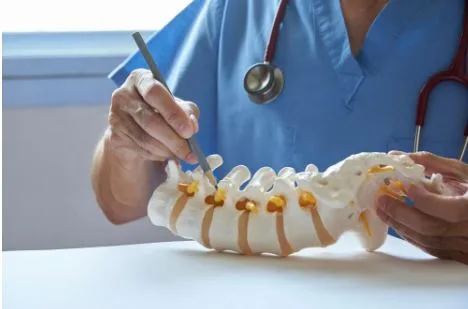Minimally Invasive Spine Surgery: A Game-Changer for Back Pain Relief
Back pain affects millions of people worldwide and can make everyday activities challenging. When medications and physical therapy fail to provide lasting relief, surgery often becomes the next step. However, many patients worry about traditional open surgery because of the large incisions, long recovery time, and higher risk of complications. This is where minimally invasive spine surgery (MISS) offers a better option for many individuals dealing with chronic back problems. This article explains what minimally invasive spine surgery is, how it works, its benefits, and why it is considered one of the most effective treatments for back pain today.
What Is Minimally Invasive Spine Surgery?
Minimally invasive spine surgery is a modern technique designed to fix spinal issues using much smaller incisions compared to traditional open surgery. Instead of cutting through large sections of muscle and tissue, surgeons use special tools and advanced imaging to access the spine through tiny openings.
Because the procedure avoids extensive muscle damage, it usually leads to less pain after surgery, shorter hospital stays, and a faster return to daily activities.
Some common conditions treated with minimally invasive spine surgery include:
- Herniated discs
- Spinal stenosis
- Degenerative disc disease
- Scoliosis
- Spinal instability
How Does Minimally Invasive Spine Surgery Work?
In traditional spine surgery, the surgeon needs to make a large incision and move aside muscles to reach the spine. This often causes more trauma to the body and requires a longer healing period.
In minimally invasive spine surgery, the process is different. The surgeon makes one or more small incisions and uses tubular retractors or endoscopes to create a pathway to the spine. X-ray or computer-guided imaging helps the surgeon see the affected area clearly without opening a large section of the back.
Special instruments are then used to repair or remove damaged discs, relieve nerve pressure, or stabilize the spine. Once the procedure is complete, the small incisions are closed with minimal scarring.
Benefits of Minimally Invasive Spine Surgery
1. Smaller Incisions
Since the surgery requires only tiny cuts, the scars are minimal, and the surrounding muscles are preserved as much as possible.
2. Less Post-Surgical Pain
With less muscle damage, patients often report significantly less pain after the procedure compared to open spine surgery.
3. Faster Recovery
Many patients can return to normal activities in weeks rather than months. Some procedures are even done on an outpatient basis.
4. Reduced Risk of Infection
Smaller wounds and less tissue exposure lower the risk of post-surgical infections.
5. Shorter Hospital Stay
Most patients undergoing minimally invasive spine surgery either go home the same day or after a short hospital stay, making the overall experience easier and more comfortable.
When Is Minimally Invasive Spine Surgery Recommended?
Not every spine condition requires surgery, and not every patient is a candidate for minimally invasive techniques. Generally, doctors recommend MISS when:
- Non-surgical treatments such as medication or physical therapy have failed.
- The patient has ongoing severe back or leg pain caused by nerve compression.
- Imaging tests show structural problems in the spine that require correction.
To know if you are a candidate for minimally invasive spine surgery, it’s essential to consult a qualified spine surgeon in New York who specializes in these procedures. A thorough evaluation can help determine whether this approach is right for your condition.
Common Types of Minimally Invasive Spine Procedures
There are several types of MISS procedures, each designed to address specific spinal problems:
1. Microdiscectomy
Used to remove part of a herniated disc pressing on a nerve.
2. Laminectomy
Relieves pressure on spinal nerves caused by conditions such as spinal stenosis.
3. Spinal Fusion
Stabilizes the spine by joining two or more vertebrae together, often used for degenerative disc disease or spinal instability.
4. Kyphoplasty and Vertebroplasty
Treats spinal fractures by injecting bone cement into the affected vertebra to restore strength and stability.
Preparing for Minimally Invasive Spine Surgery
Preparation for MISS is similar to traditional surgery, though often less extensive. Your doctor will likely recommend:
- Stopping certain medications before surgery.
- Performing pre-operative tests such as blood work and imaging.
- Avoiding food or drinks for a specific period before the procedure.
Patients are usually advised to arrange help at home for the first few days post-surgery and to plan for light activity while recovering.
Recovery and Aftercare
One of the biggest advantages of minimally invasive spine surgery is the quicker recovery time. Many patients are able to walk within a day of the procedure. However, complete healing can take weeks to months, depending on the specific surgery performed.
During recovery, patients are often advised to:
- Follow prescribed physical therapy exercises.
- Avoid heavy lifting or strenuous activities for a set period.
- Maintain a healthy diet to support healing.
Following your surgeon’s aftercare instructions is key to achieving the best outcome.
Risks and Complications
Although minimally invasive spine surgery has many benefits, it is still a surgical procedure and carries some risks, including:
- Infection
- Bleeding
- Nerve injury
- Anesthesia complications
Working with an experienced spine specialist in New York significantly reduces these risks and ensures you receive the best care possible.
Why Choose Minimally Invasive Spine Surgery?
For many patients, minimally invasive spine surgery offers an effective solution to chronic back pain without the long recovery time associated with traditional open procedures. It allows people to regain mobility and quality of life much sooner, making it a preferred option for those who have not found relief with conservative treatments.
If you are struggling with ongoing back issues and considering surgical options, consulting a skilled spine surgeon who specializes in minimally invasive techniques is an important first step.
Final Thouhts
Minimally invasive spine surgery is reshaping the way spinal conditions are treated, offering a less demanding alternative to traditional open surgery. With smaller incisions, less muscle damage, and quicker recovery times, it helps patients return to daily life sooner while experiencing less post-surgical pain. For people suffering from long-term back issues, this technique provides a practical and effective option to regain mobility and improve quality of life. Consulting an experienced specialist is the best way to determine whether this advanced procedure suits your specific condition and health needs, ensuring you receive the right treatment for lasting relief.






